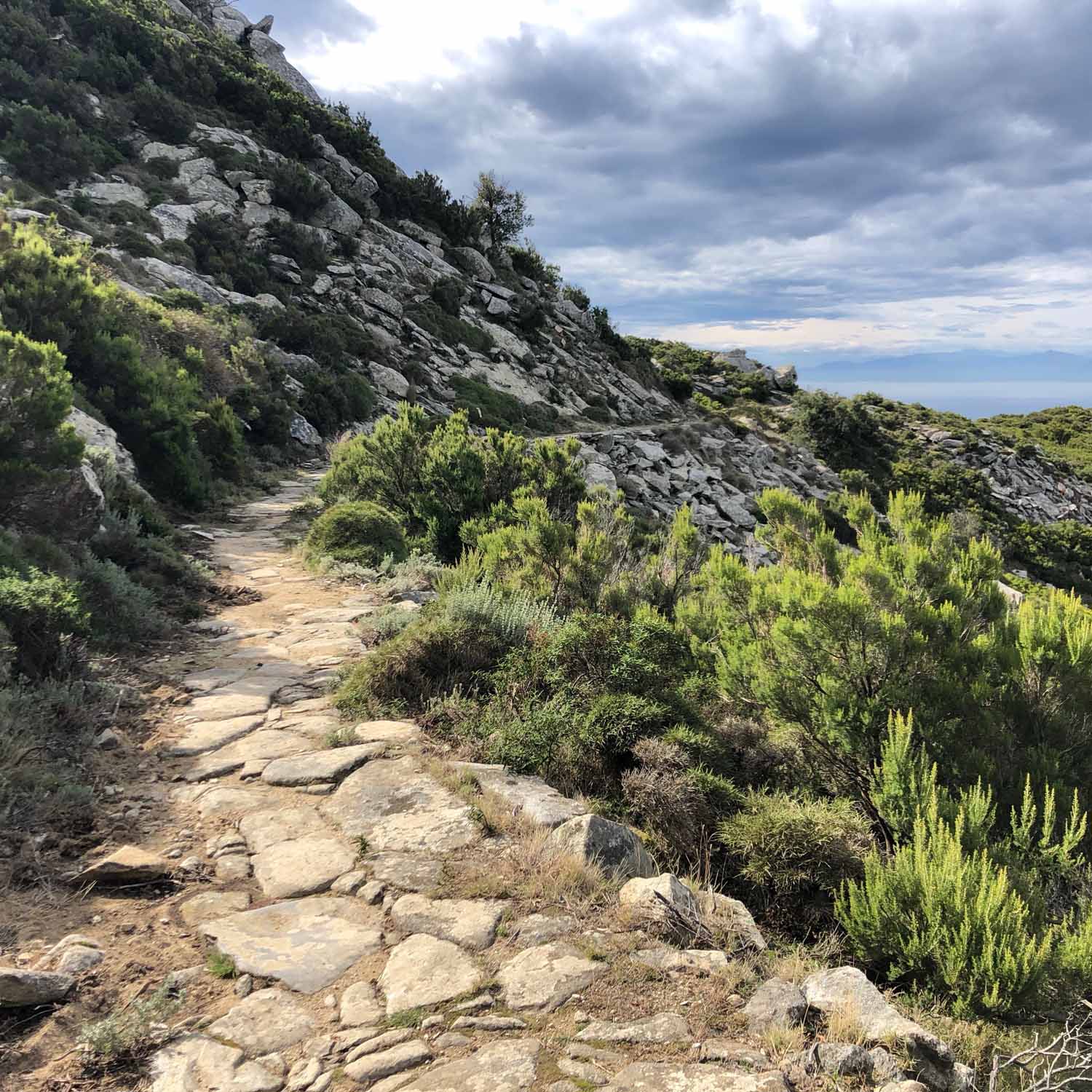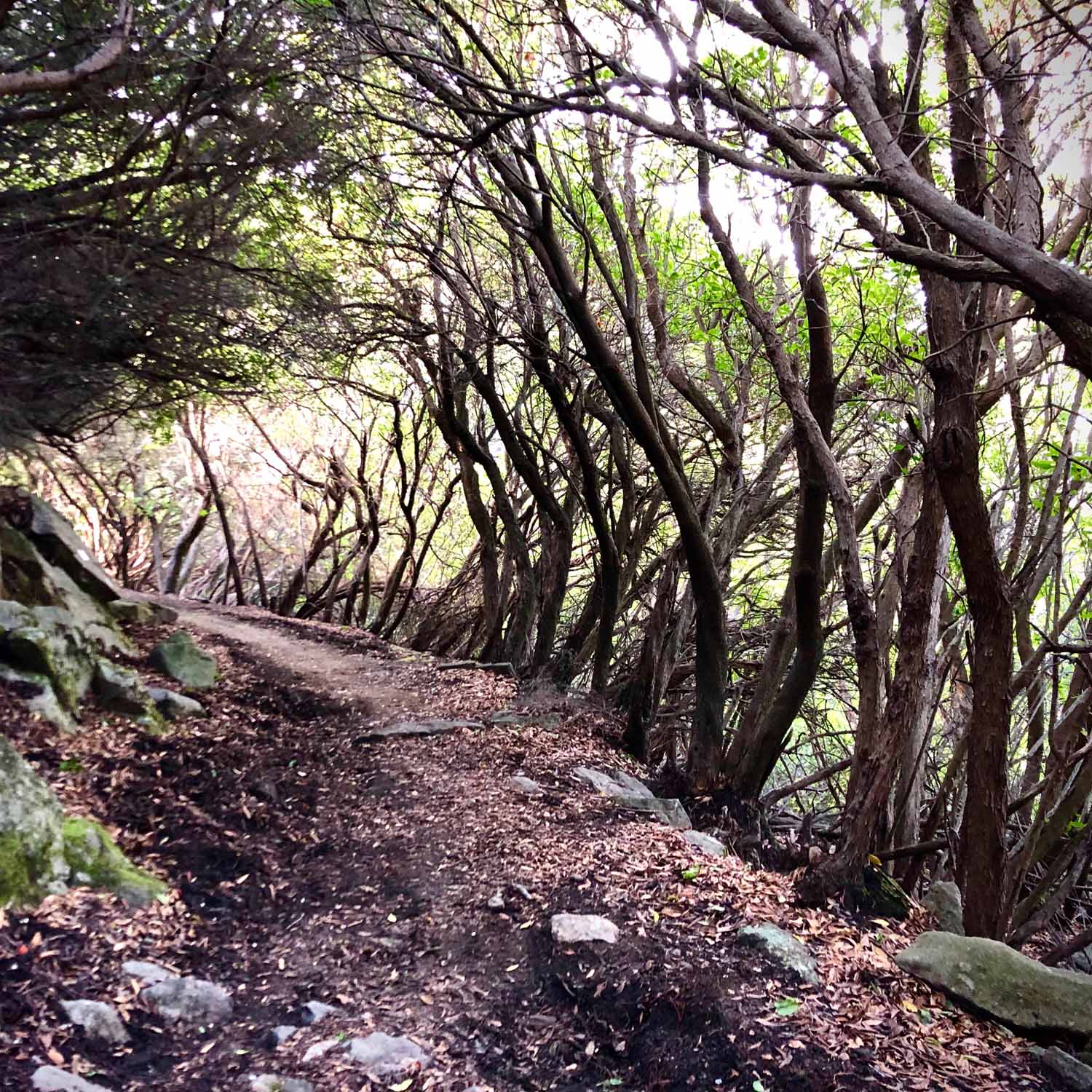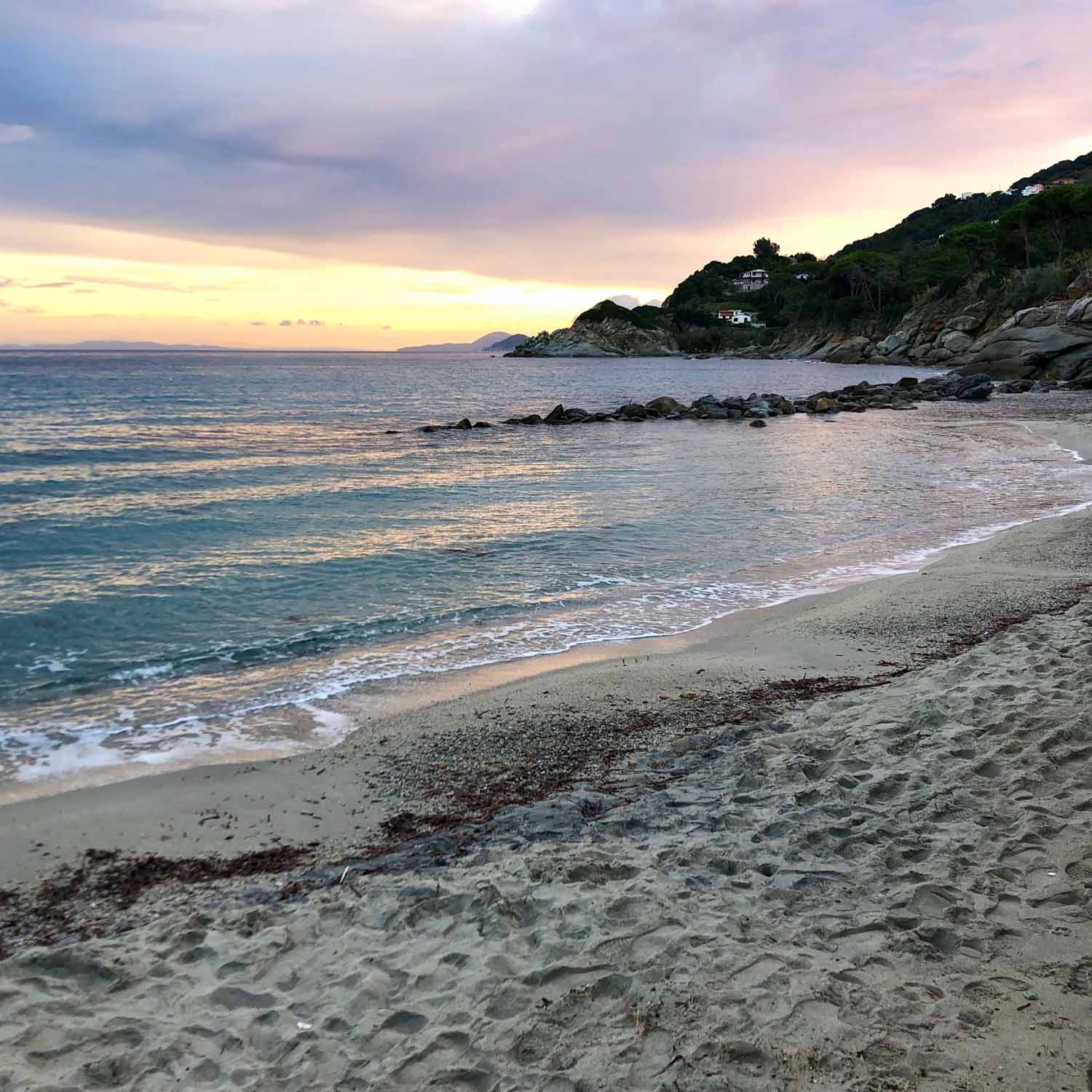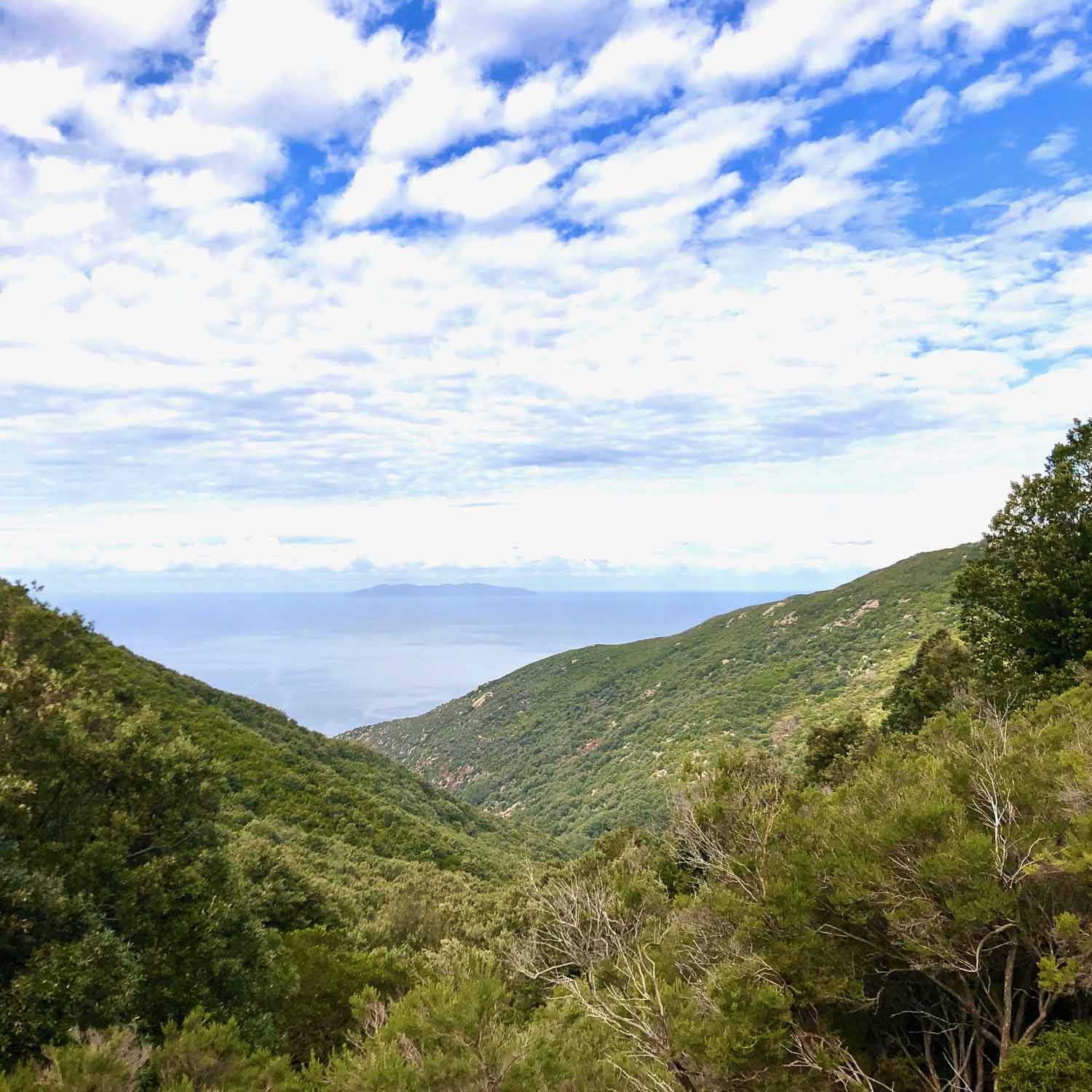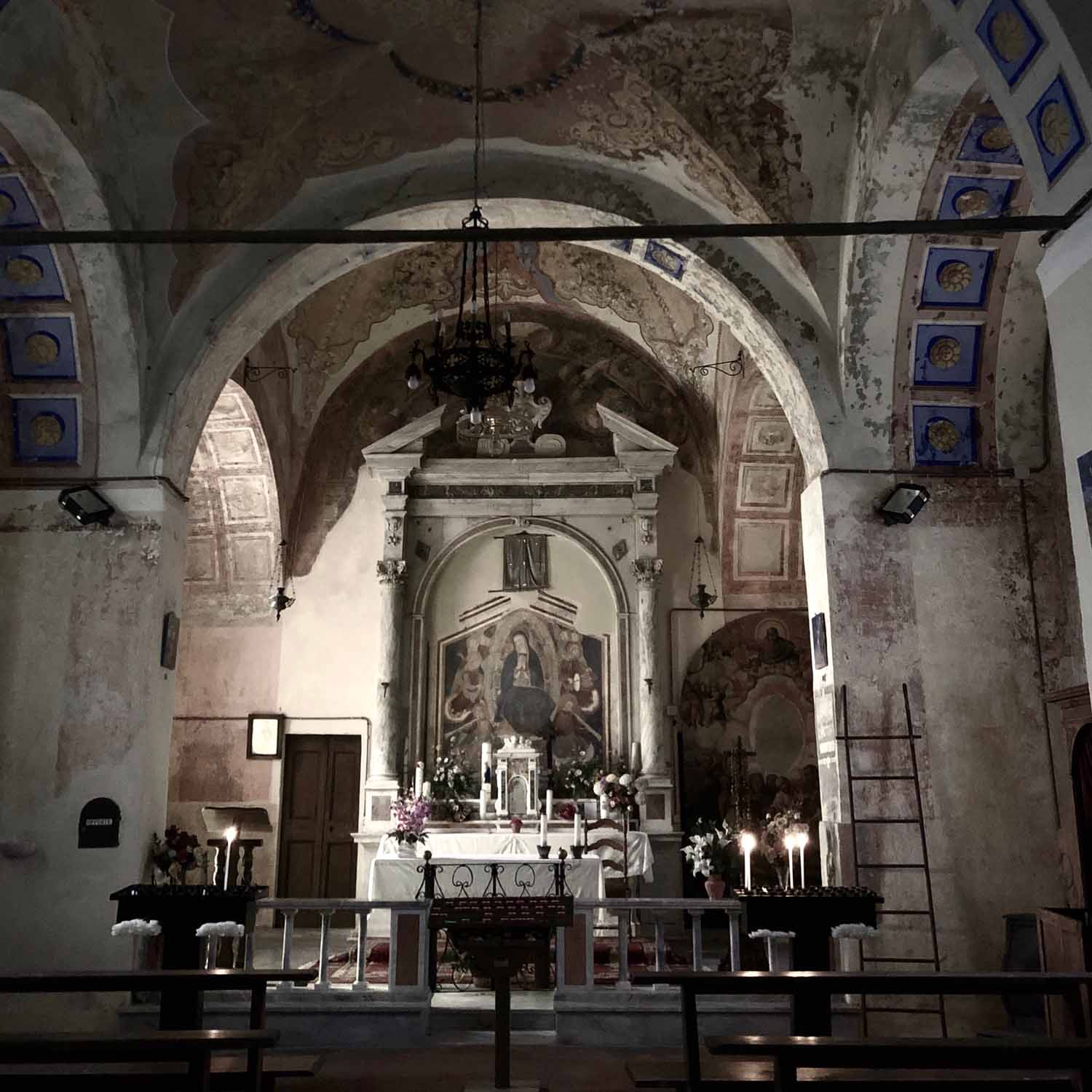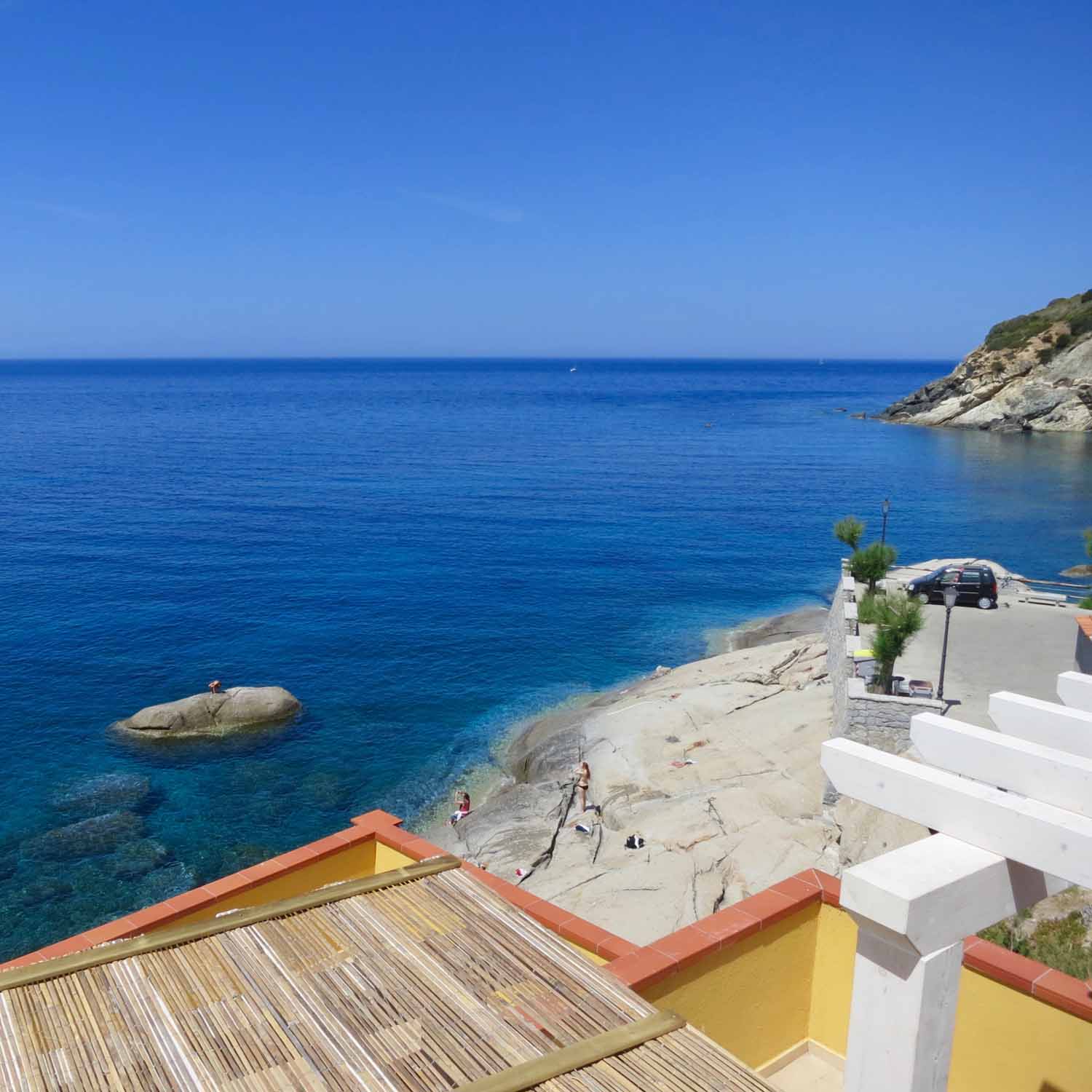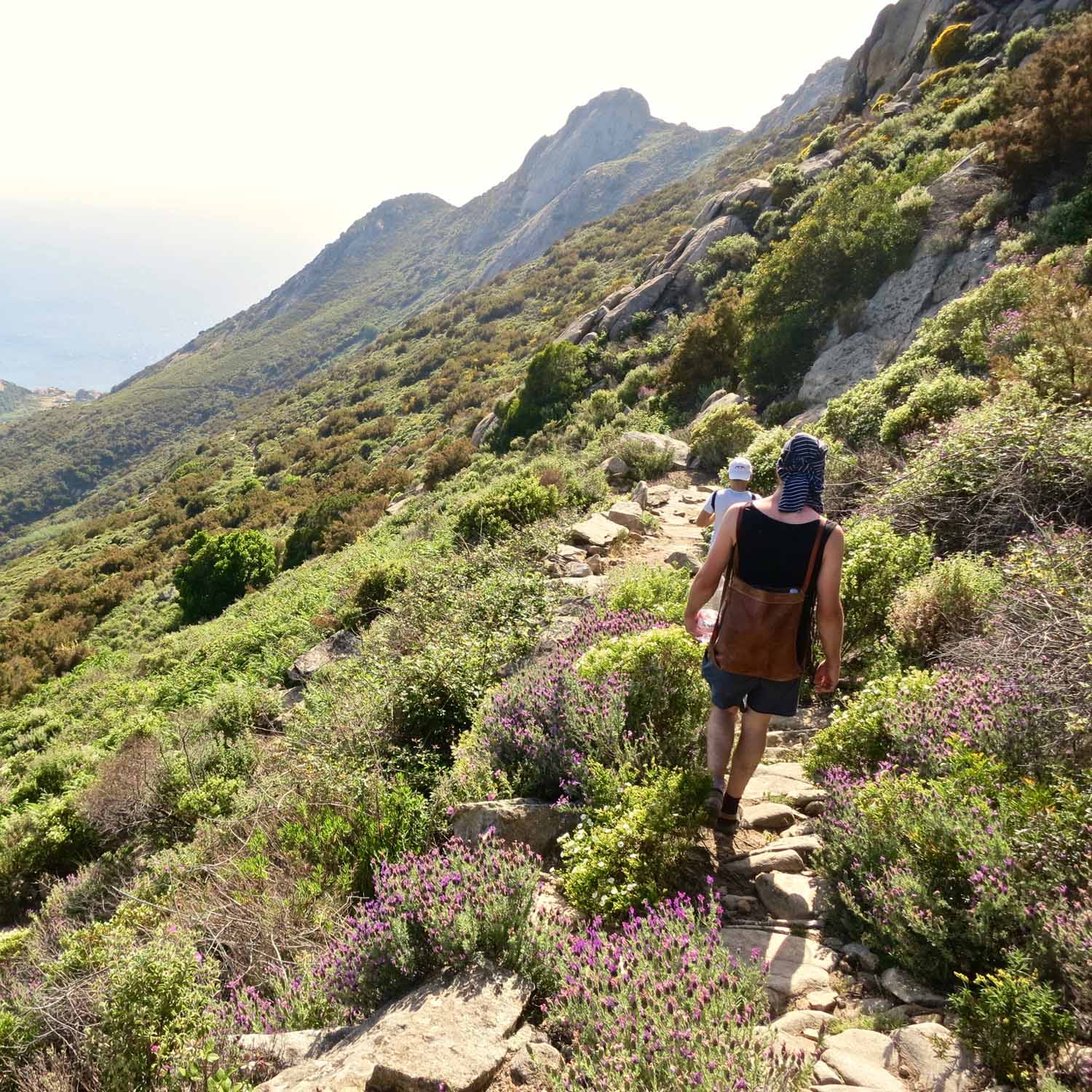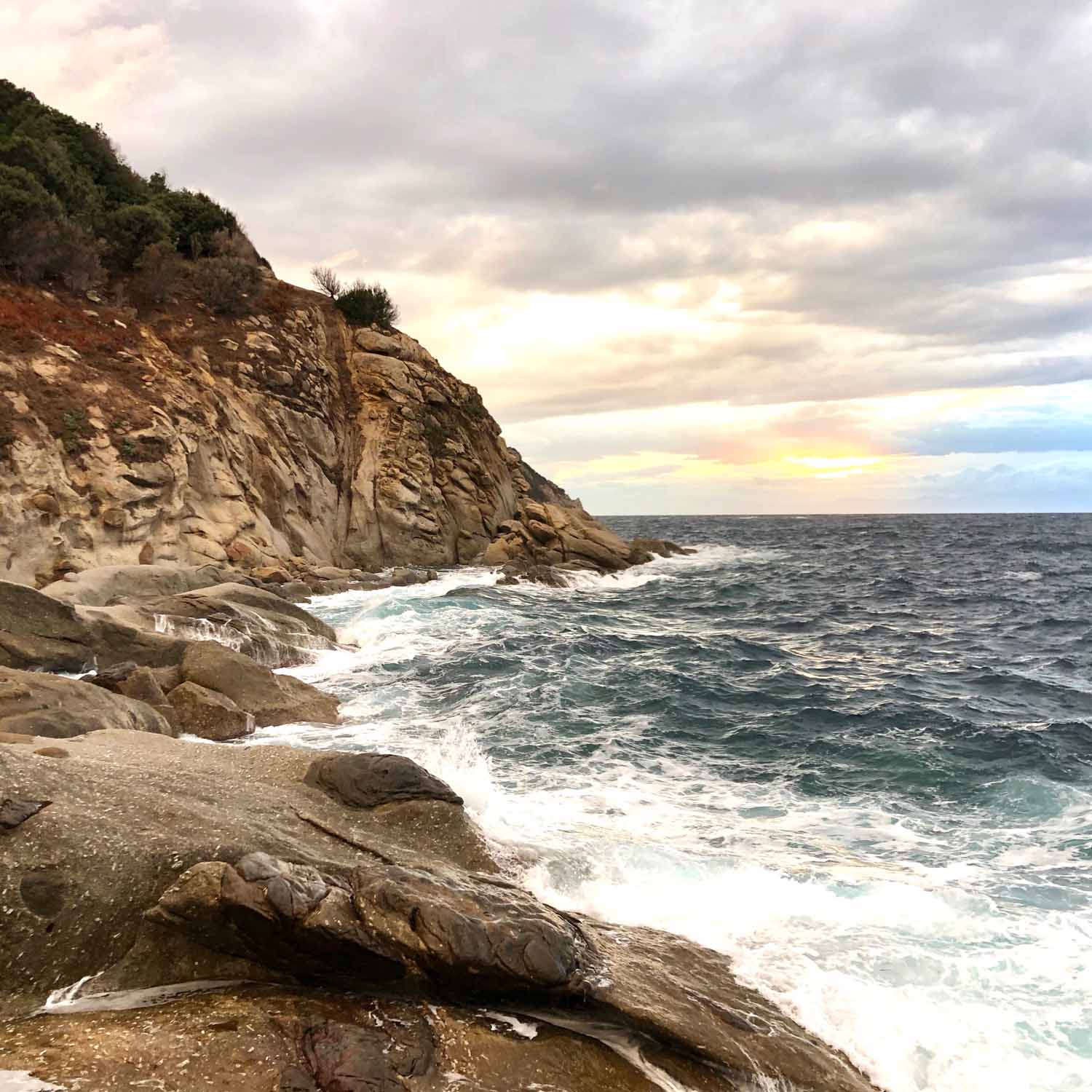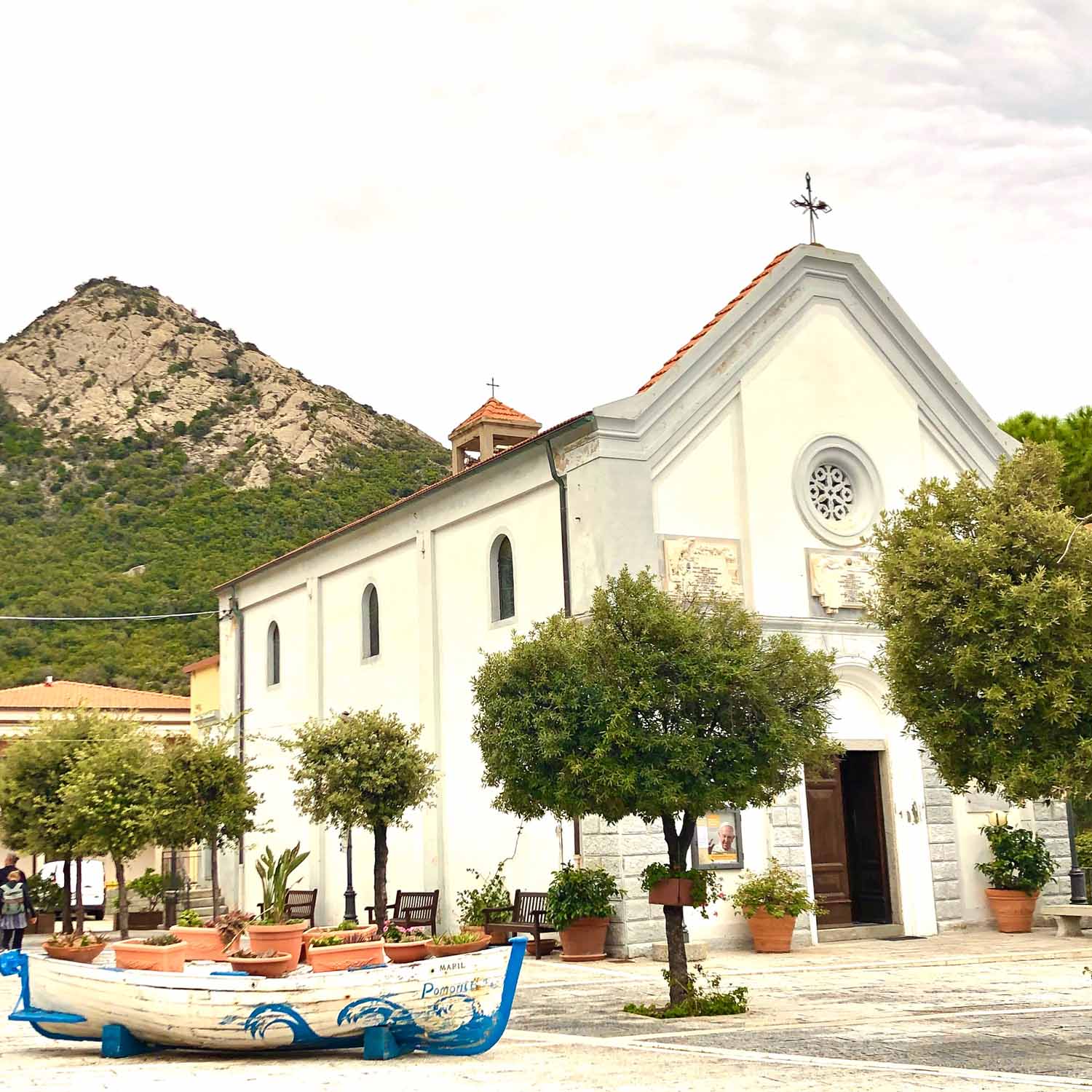Where the (Elban) wild things are
[Day 5]
by Rudston Steward
hen you look at a map of Elba—the shape might be described as a weird wonky fish—it divides into three segments. The eastern third, a fishy tail stretching from Cavo to Capoliveri, historically held most of the islands mines and forges. Elba’s metals have been mined ever since copper extraction began in the third millennium BC; its vast reserves of iron supplied the Roman legions with their superior barbarian-smashing swords.
The relatively flat and fertile middle third of the island, its corpus and fin, is dominated by the capital city of Portoferraio, with its chaotic port and massive defensive walls built by Cosimo de’ Medici after the Florentines booted the Republic of Pisa in the 16th Century.
As for the western third, the funky roundish fish-head: that’s where the wild things are. The Monte Capanne massif rises to over a thousand meters, surrounded by peaks and forested valleys cascading down to the sea. The rugged western coast is dotted with beaches fringed by steep cliffs; a scenic road traces the perimeter in an arc from Patresi to Fetovaia, but there are no roads heading inland, it’s too steep. To venture into the Elban wild you have to walk.
TO VENTURE INTO THE ELBAN WILD YOU HAVE TO WALK
Day 5 of our Elba Safari starts from sea-level in the cove of Sant’Andrea and ascends to the 11th Century church of Madonna del Monte, one of the island’s oldest shrines, likely built on a pagan site. More recently Napoleon worshipped there too, in a manner of speaking, when he holed up with his Polish mistress Marie Walewska in 1814. From Madonnna del Monte the route contours the lower western flanks of Monte Capanne—the domain of wild mouflon sheep, peregrine falcons and whole flowering hillsides of lavender, broom and strawberry trees. At a panoramic spot called Il Troppolo we emerge to a sweeping vista of the Tuscan Archipelago, with the craggy peaks of northern Corsica tantalizingly close, beckoning across the sea.
The last leg of the walk drops into a valley running down to the coast at Pomonte, through aromatic sticky cistus and maquis scrub, towards the cerulean blue strip of the shimmering Mediterranean. Into town onto tarmac, across the perimeter road, straight down to the pebble beach and into the water. Then we swim out to sea to watch the sun setting behind Corsica, buoyed by waves and happiness—that’s how the Elban wild things wrap up a walking trip.

